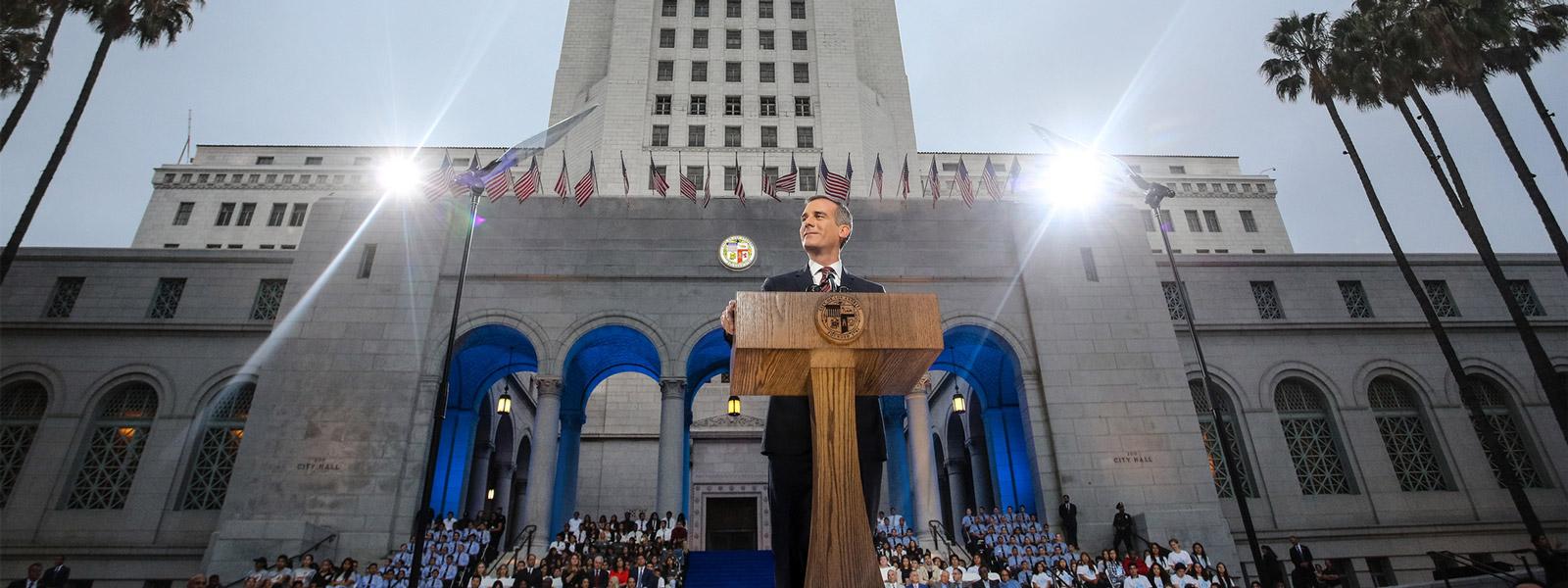
Classroom pupils doing schoolwork. (Photo: Shutterstock/Rido)
Los Angeles and Oakland Get ‘F’ Grades for Charter Funding ‘Equity’
The state provides the largest proportion of funding to most schools
By Lance Izumi, August 22, 2023 2:20 pm
The University of Arkansas study compared funding for regular public schools and charter schools in 18 cities across the country using 2019-2020 budget data. Historically, regular public schools have been funded more generously than charter schools, which are autonomous publicly funded schools independent of school districts, but that gap is slight in some cities and massive in others.
In Memphis, for example, regular public schools receive more funding per pupil compared to charter schools, but the gap is below four figures–$13,111 versus $12,265, for a difference of $846 or 6.5 percent. The study, therefore, gives a “B” grade to Memphis for having a relatively slight funding disparity.
In contrast, Los Angeles and Oakland have much bigger funding gaps.
In Los Angeles, regular public schools received $19,630 in per-pupil funding, while charter schools received just $14,405, for a difference of $5,226 or nearly 27 percent.
In California, the state provides the largest proportion of funding to most schools. It is therefore instructive that regular public schools in Los Angeles receive $2,903 more in per-pupil funding than regular charter schools.
Many charter critics claim that charter schools make up for their disadvantage in public funding through greater non-public funding. However, in Los Angeles, regular public schools actually receive $36 more in funding per pupil from non-public sources than charter schools.
Also, Los Angeles regular public schools receive much more public funding despite the fact that the student demographics in charter schools mirror those in the regular schools.
For example, while 79 percent of regular public school students in Los Angeles are from low-income backgrounds, 77 percent of charter students are low income.
Similarly, the proportion of non-English-fluent students and special education students is virtually the same.
Based on their current and previous research on Los Angeles, the study’s authors say, “student need cannot explain the large disparity that still remains.”
Therefore, the study concludes, “Los Angeles still earns an F in terms of funding equity.”
As bad as the funding disparity is in Los Angeles, the gap is even worse in Oakland.
In Oakland, regular public schools received $21,062 in per-pupil funding, while charter schools received just $13,959, for a difference of $7,103 or nearly 34 percent.
Again, this funding gap, say the study authors, cannot be explained by student demographics: “Generally, Los Angeles and Oakland have similar proportions of students in poverty and [English language learners] in both cities,” plus students with special needs.
The funding chasm earned “Oakland an F for charter funding equity.”
Despite the funding disparity between regular public schools and charter schools, the study notes: “The autonomy charter schools enjoy allows them to innovate and better tailor the educational experience to serve their students’ unique needs and interests. Compared to parents of [traditional public school] students, parents of charter school students generally report higher levels of satisfaction with their children’s schools.”
Importantly, the study says that charter school students have, on average, higher standardized test scores, higher high school graduation rates, higher rates of college enrollment, and more positive behavioral outcomes.
In particular, “Charter schools appear to be especially effective in improving outcomes for Black and Hispanic students, students in poverty, and students with special needs.”
Given the higher performance of charter school students, what would be the outcome if the funding gap was closed?
At a media briefing on the study’s findings, Patrick Wolf, chair of the department of education reform at the University of Arkansas and one of the study’s authors, indicated that closing the funding gap could potentially improve outcomes for charter school students even further.
Governor Gavin Newsom and other California leaders, who are always talking about “equity,” should heed the study’s call for funding equity between charter schools and regular public schools, rather than, as they have done, erecting obstacles to charter school success.
This op ed was published originally at the Pacific Research Institute.
- Los Angeles and Oakland Get ‘F’ Grades for Charter Funding ‘Equity’ - August 22, 2023
- Gov. Newsom Ignores Lax Safety Practices at CA Public Schools - June 3, 2022





Bbbbbbut look at the quality edumacation students are getting in Los Angeles and Oakland public schools.